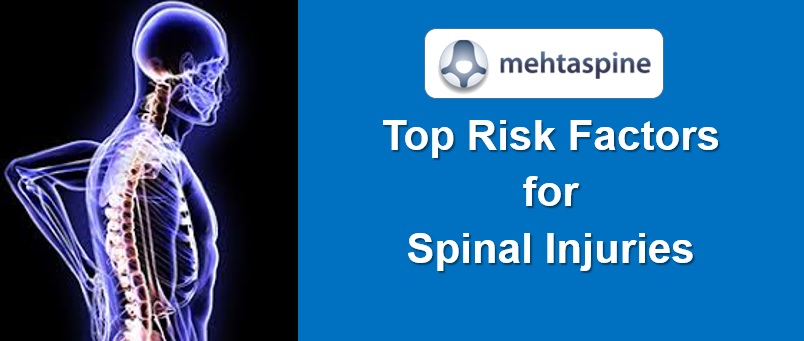Top Risk Factors for Spinal Injuries
Spinal cord injuries can happen to anyone. It is mostly seen among people who belong to 18-35 year age group. This happens due to accidents or falls. Athletes, gymnasts etc also have a high risk of spinal injuries. The space within the spine can narrow which puts pressure on the nerves that travel through the spine. This condition is called spinal stenosis and it can affect the lower back and the neck. While in some symptoms may not be visible while others experience numbness, tingling or weakness in the muscles.
Types of spinal stenosis
-
Cervical Stenosis :
In this type, the narrowing occurs in the spinal area of your neck. Symptoms include numbness in arm, leg or foot, feeling weak, problems with balancing and walking, neck pain and bladder or digestive dysfunction.
-
Lumbar Stenosis:
In this type, the narrowing occurs in the spinal area of your lower back. Symptoms include tingling or numbness in leg, weakness in leg, pain or cramping on foot and back pain.
Causes of spinal stenosis
- Overgrowth of bone: Osteoarthritis can lead to wear and tear of bones. This forms bone spurs, which may grow into the spinal canal. Paget’s disease can also cause bone overgrowth in spinal area.
- Herniated disks: The soft cushions between the vertebrae may dry out as you age. Cracks in the exterior part of the disk may press on to the spinal cord and nerves.
- Thickened ligaments: The cords which hold the spinal bone may become stiff and thicken as you age. The thickened ligaments bulge into the spinal canal.
- Tumors: There are chances for abnormal growth or tumor inside spinal cord. It can even cover the space between the spinal cord and the vertebrae. This can only be identified through spine imaging using CT or an MRI scan.
People above 50 have risks of spinal stenosis. Degenerative diseases may trigger spinal stenosis in younger people. It may include congenital spinal deformity, trauma or even a genetic disease. Spinal imaging can help in identifying the exact cause of the disease.
Complications of Spinal Stenosis:
Spinal stenosis, if left untreated, may lead to many complications such as
- Balance problems
- Weakness
- Numbness
- Paralysis
Risk Factors
- This issue affects disproportionate men rather than women
- A minor injury, if left untreated can lead to this condition
- If the person has a bone or joint disorder, there is high risk of spinal cord injuries
- Engaging in risky behavior like jumping from heights, diving in shallow water etc can increase the risk
- When a person is above 65, there is a risk of falls, which may cause spinal stenosis
- Careless driving, may lead to accidents and can cause spinal stenosis
If you are diagnosed with spinal cord injury, seek professional help and restrain yourself from doing certain activities. Also, follow the instructions provided by your health care professional and go for follow ups during regular intervals to stay healthy.


